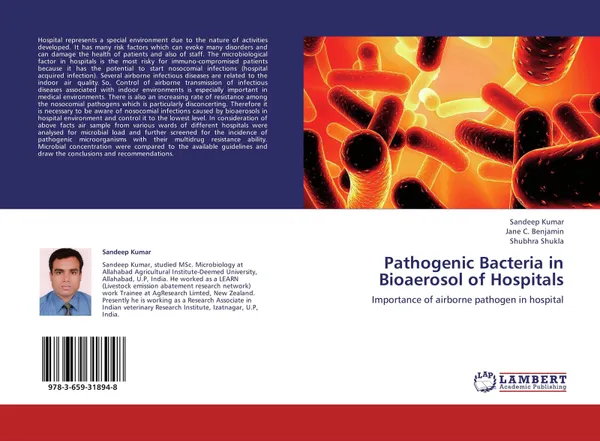Pathogenic Bacteria in Bioaerosol of Hospitals
2013
56 страниц
Язык: Английский
Тираж: 1000
📙 Hospital represents a special environment due to the nature of activities developed. It has many risk factors which can evoke many disorders and can damage the health of patients and also of staff. The microbiological factor in hospitals is the most risky for immuno-compromised patients because it has the potential to start nosocomial infections (hospital acquired infection). Several airborne infectious diseases are related to the indoor air quality. So, Control of airborne transmission of infectious diseases associated with indoor environments is especially important in medical environments. There is also an increasing rate of resistance among the nosocomial pathogens which is particularly disconcerting. Therefore it is necessary to be aware of nosocomial infections caused by bioaerosols in hospital environment and control it to the lowest level. In consideration of above facts air sample from various wards of different hospitals were analysed for microbial load and further screened for the incidence of pathogenic microorganisms with their multidrug resistance ability. Microbial concentration were compared to the available guidelines and draw the conclusions and recommendations.
Мнения
